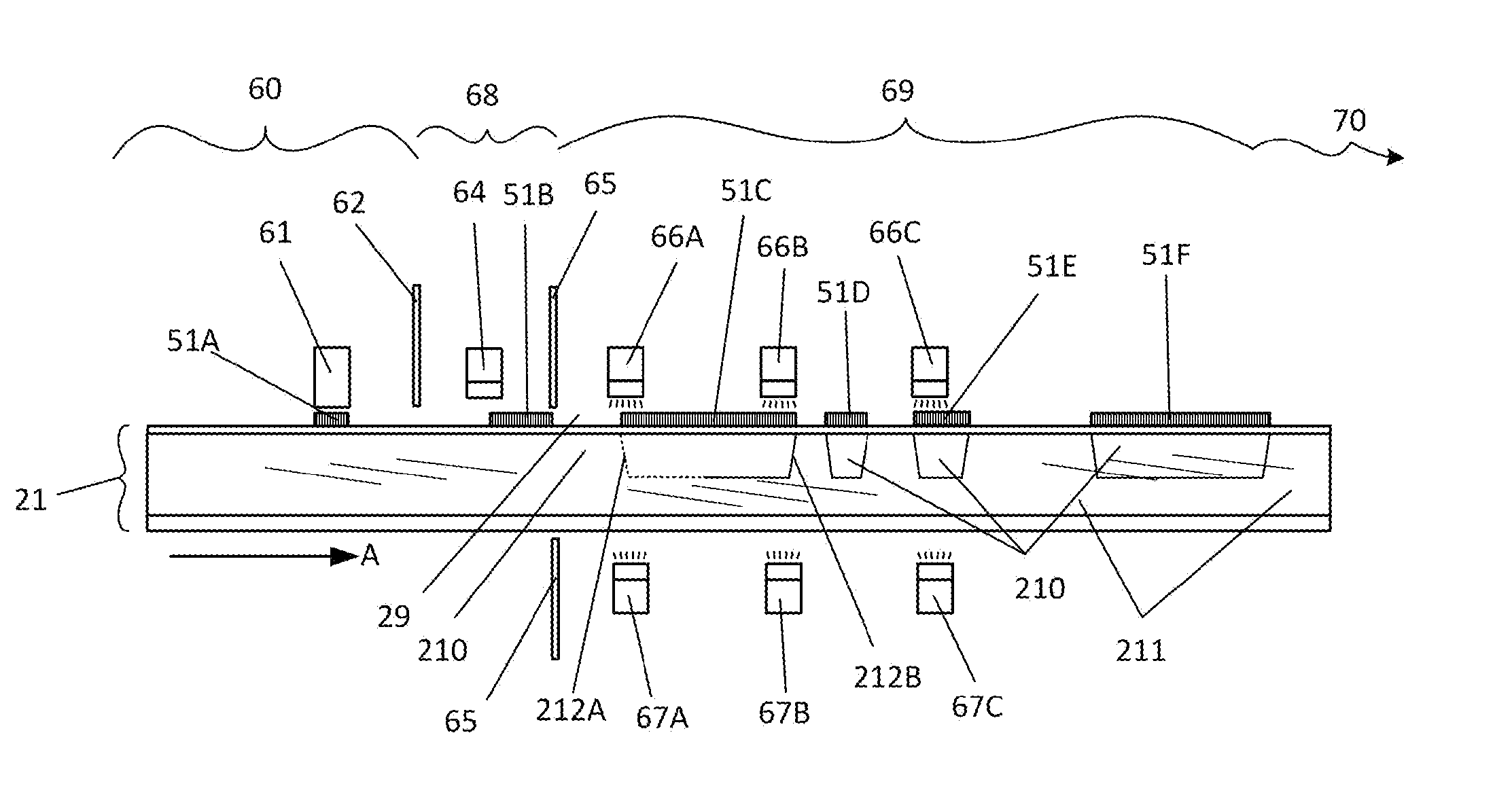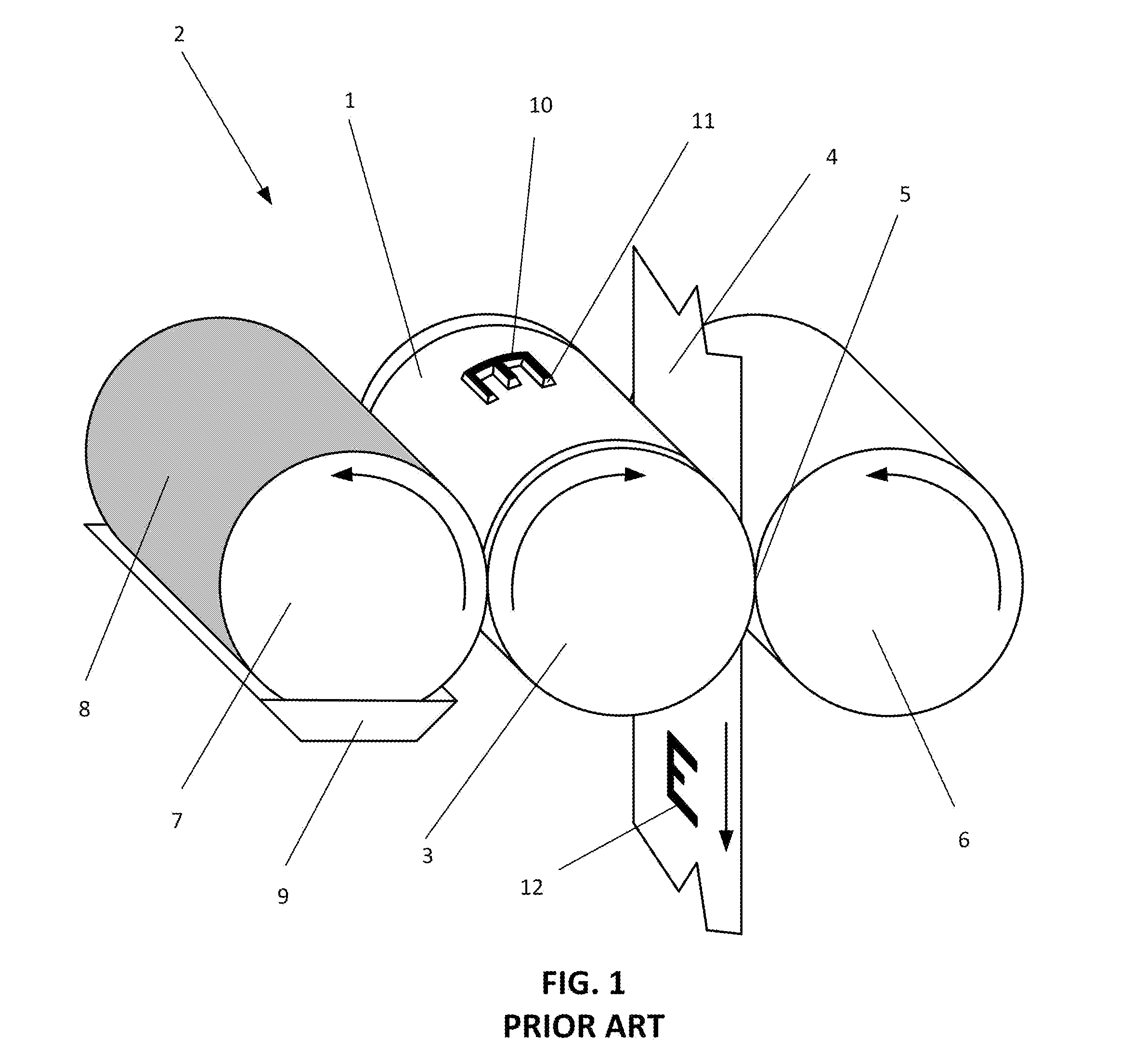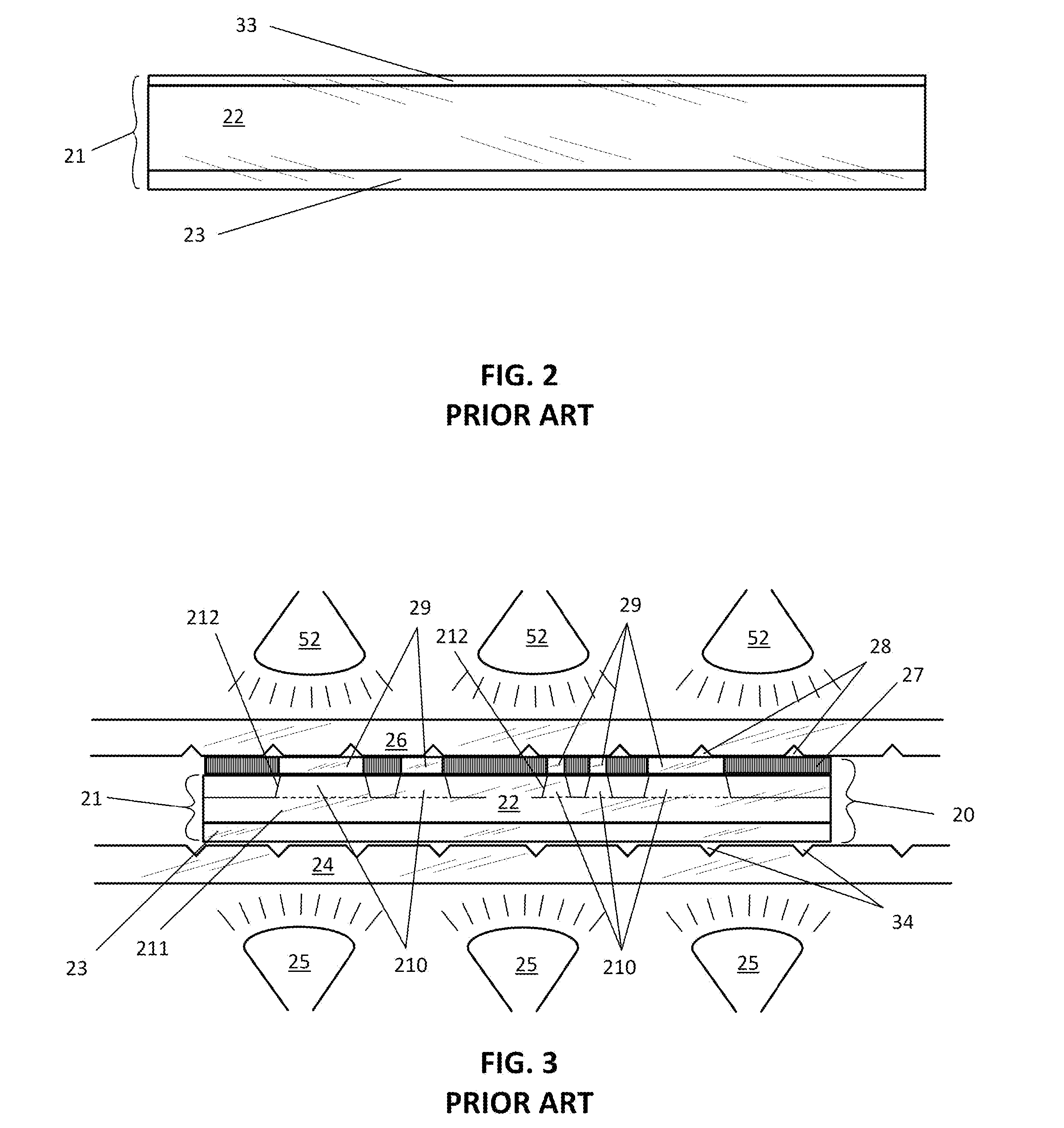Flexographic Printing Plates and Methods
a printing plate and flexographic technology, applied in the field of flexographic printing plates and methods, can solve the problems of significantly more time for application and drying of ink, and achieve the effects of increasing the production speed of such plates, sufficient opacity, and improving quality
- Summary
- Abstract
- Description
- Claims
- Application Information
AI Technical Summary
Benefits of technology
Problems solved by technology
Method used
Image
Examples
first embodiment
[0050]FIG. 4 is a magnified, not-to-scale cross-sectional view of the present invention, namely a solvent ink negative image 51 printed on the slip film 33 of a sheet photopolymer 21. The solvent ink is made in accordance with U.S. patent application Ser. No. 13 / 902,301, and is thus satisfactorily printed to the required opacity on the typical slip film material, polyester, e.g., polyethylene terephthalate (PET) using one print-head pass of an inkjet printer. While inkjet printing is the current technology of choice for precise additive imaging, the present invention applies to any method of ink application which allows the masking image to be applied in a single laydown. Eliminating the need for plural laydowns speeds the process of image creation but also removes any issues with registration of duplicate laydowns.
[0051]Moreover, using this embodiment, the entire relief image negative (see element 27 in FIG. 3) of the prior art is eliminated, along with the air-containing interface...
second embodiment
[0059]FIG. 5 is a magnified, not-to-scale cross-sectional view of the present invention, namely a schematic of a combined inkjet printing and relief image creating machine in the process of sequentially printing the laminate of FIG. 4 and producing a polymerized relief-imaged plate ready for post-processing. A fresh, unprinted sheet photopolymer 21, having been introduced into the inkjet printer portion 60 of this embodiment, is having relief negative image 51A printed on it by an inkjet printer head 61. The sheet polymer 21 is moving in the direction A while the printer head 61 moves back and forth in a direction toward and away from the viewer. Thus the image 51A represents a single pass of the head 61 toward the viewer (a single laydown of ink). When head 61 reaches its farthest point toward the viewer, sheet 21 will index in direction A and head 61 will move away from the viewer, laying down ink as programmed A stationary opaque baffle 62 prevents light from entering the printer...
PUM
| Property | Measurement | Unit |
|---|---|---|
| temperature | aaaaa | aaaaa |
| surface temperature | aaaaa | aaaaa |
| optical density | aaaaa | aaaaa |
Abstract
Description
Claims
Application Information
 Login to View More
Login to View More - R&D
- Intellectual Property
- Life Sciences
- Materials
- Tech Scout
- Unparalleled Data Quality
- Higher Quality Content
- 60% Fewer Hallucinations
Browse by: Latest US Patents, China's latest patents, Technical Efficacy Thesaurus, Application Domain, Technology Topic, Popular Technical Reports.
© 2025 PatSnap. All rights reserved.Legal|Privacy policy|Modern Slavery Act Transparency Statement|Sitemap|About US| Contact US: help@patsnap.com



